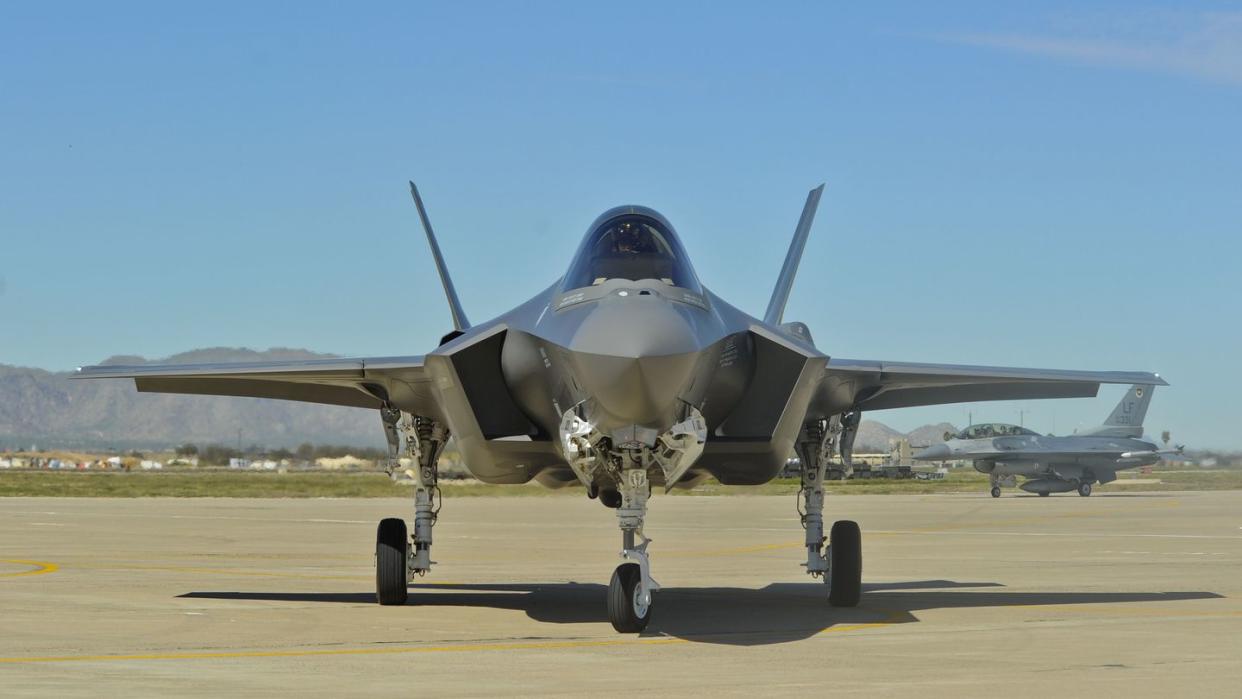House defense bill would add more test F-35s as upgrades remain behind

- Oops!Something went wrong.Please try again later.
The military would dedicate more Lockheed Martin-made F-35 Joint Strike Fighters to testing new technologies and capabilities under the House’s proposed fiscal 2025 National Defense Authorization Act.
An amendment proposed by Rep. Rob Wittman, R-Va., and adopted by a voice vote Wednesday would increase the number of developmental test F-35s in the works from six to at least nine, tweaking a provision that was passed as part of the FY24 NDAA.
Wittman’s amendment to the annual defense policy bill would also require those test F-35s to come from the 18th lot of jets. That would be sooner than the schedule in the FY24 NDAA, which had its six test F-35s coming from the 19th lot.
Wittman’s amendment would also give the military more flexibility to decide which F-35 variants — the Air Force’s conventional takeoff-and-landing F-35A, the Marine Corps’ short-takeoff-and-vertical-landing F-35B, and the Navy and Marine Corps’ F-35C that can land on carriers — will be used as developmental test jets.
The FY24 NDAA required the Pentagon use two of each variant as test jets, but the latest proposal would not set any such requirements.
The House Armed Services Committee on Wednesday advanced the proposed $883.7 billion bill to the full House after a 12-hour markup.
Wittman, who chairs the panel’s Tactical Air and Land Forces Subcommittee, has frequently spoken about what he considers a need to increase the number of test F-35s to perfect upgrades, such as Technology Refresh 3. The F-35 program is struggling to finish TR-3, its latest series of hardware and software improvements. The effort is now roughly a year behind.
TR-3 is facing software problems and delays in the production of key parts, and a Government Accountability Office report earlier this month said test officials reported the software remains unstable.
Since July, the Pentagon has refused to accept deliveries of the newest F-35s from Lockheed Martin over the TR-3 delays. An undisclosed number of those jets are stored at Lockheed facilities, particularly its factory in Fort Worth, Texas, but GAO warned in its May 16 report that the firm may start running out of room to park undelivered F-35s.
GAO also raised concerns about the F-35′s program’s testing capacity, which now has jets older than four decades that frequently break.
Four more F-35s are to receive modifications and become test jets by 2026, but GAO said testers would need to use workarounds and could not conduct all the external weapons tests some F-35s would need.
The proposed FY25 NDAA would cut the Pentagon’s planned F-35 purchase by 10, redirecting the roughly billion dollars in savings to expanding the jets’ testing capacity, including by buying more test aircraft.
Wittman told reporters this month, after the committee released its proposed bill, that the F-35 program’s testing capabilities sorely need improvement and are long overdue. He said failure to invest in sufficient testing infrastructure has directly resulted in problems, such as the TR-3 delays.
GAO also raised concerns in its report about the timetable for bringing on new developmental test F-35s. The six jets that were already in the works would have been unprepared to conduct test flights until 2029 at the earliest. And the plans to retire existing test F-35s, GAO said, would have left the F-35 program with no test jets in 2028 and part of 2029.
Lockheed Martin said testing of the latest version of TR-3 is underway and expects the jets will work well enough for deliveries to resume in the third quarter of 2024. But even if the military accepts delivery of those jets, they would likely only be able to fly training missions and would be unprepared to fly combat operations until 2025.

